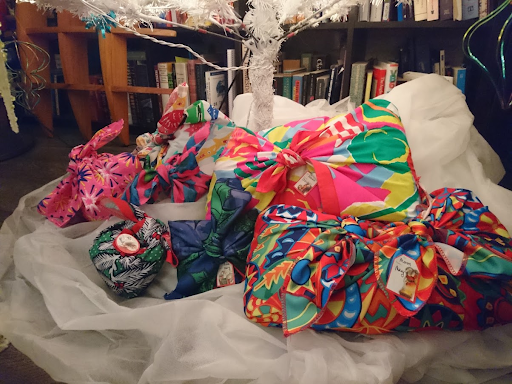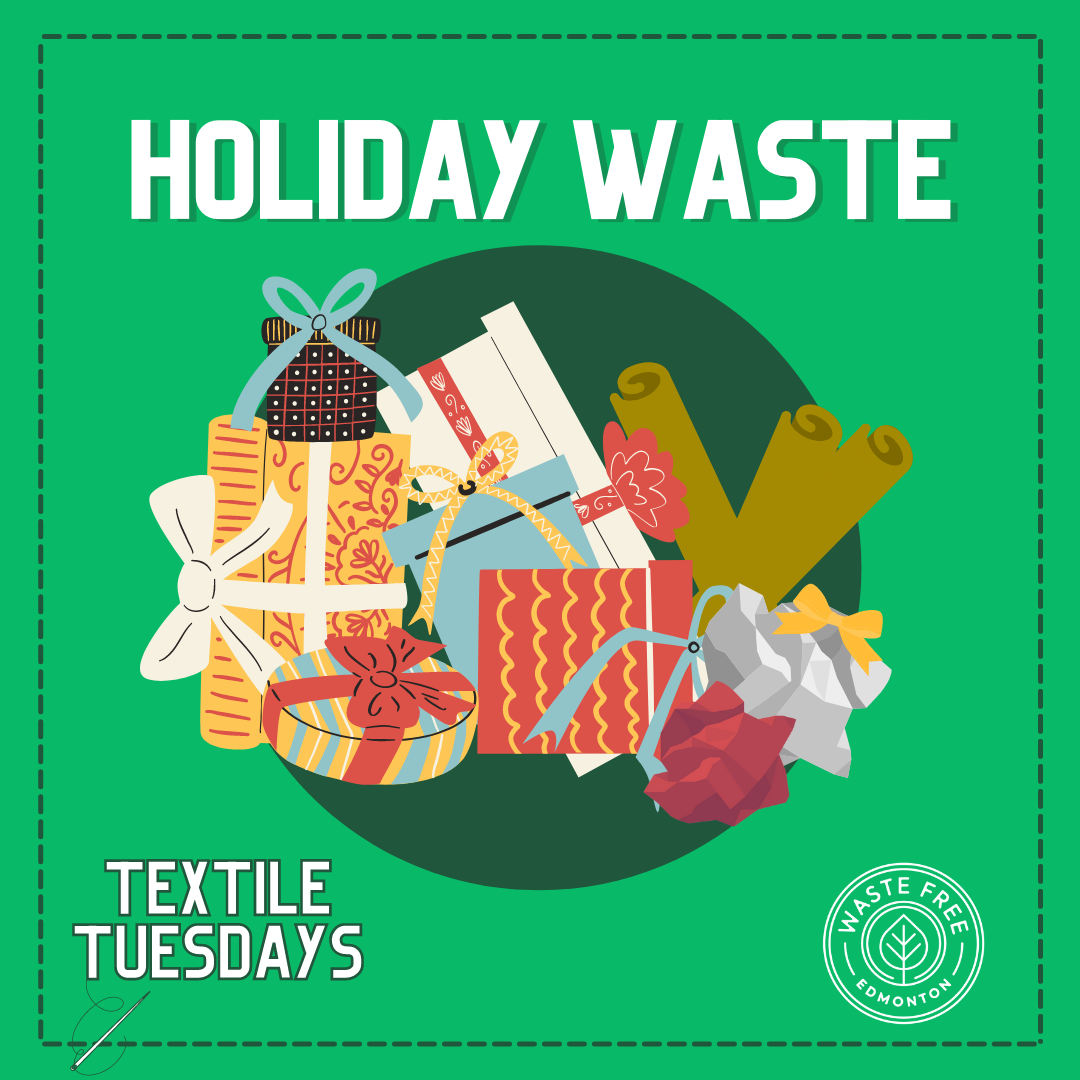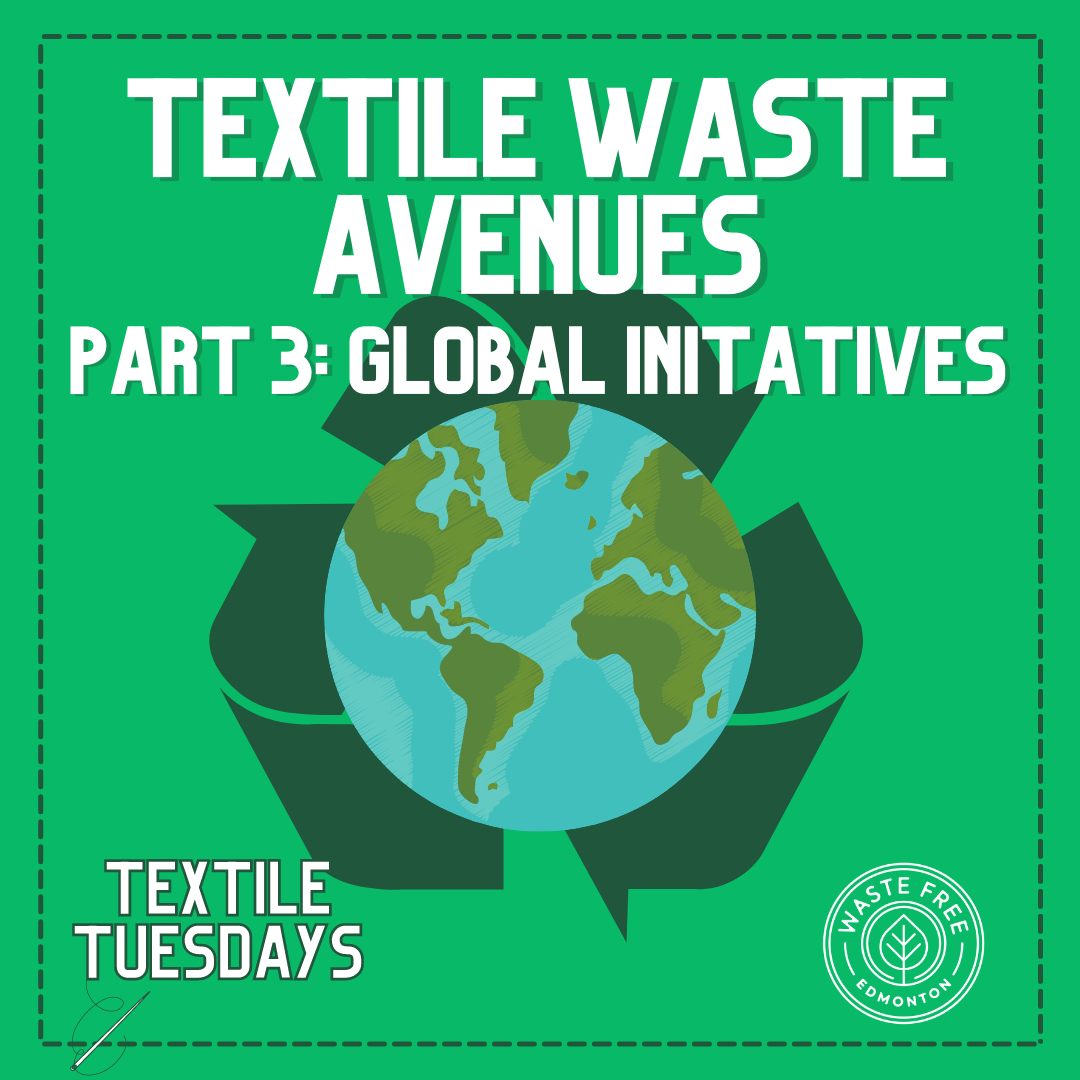As we head into the holidays we wanted to touch on a few ways you can reduce your textile waste this year.
According to a survey conducted by McKinsey & Company, about 20% of all annual apparel purchases are returned with one out of four apparel items returned when bought from e-commerce channels. They also report that an estimated 10% of returns end up in landfill! So, when buying for others consider purchasing secondhand or vintage garments as gifts rather than new, or support local designers or brands.
Another major source of waste during the holidays is gift wrap. Tape, plastic additives, and foil wrapping make gift wrap difficult or impossible to recycle. Zero Waste Canada estimates that Canadians throw out 540,000 tonnes of wrapping paper and gift bags each year! To cut down on this waste, Greenpeace Canada suggests using upcycled materials such as old maps, magazines, or newspapers to wrap gifts or make bows, using string instead of tape, or trying out Furoshiki wrapping, a Japanese method of wrapping items using a square piece of fabric.
Furoshiki wrapping is versatile as you can wrap a variety of different shapes that are usually difficult to do with paper gift wrap. You can purchase Furoshiki wrapping cloths or make your own out of unwearable textiles. Just keep in mind that knit fabrics such as t-shirts will have a little bit of stretch and you may need to double up the fabric for heavier items. There are plenty of online resources for how to make your own gift wrap from upcycled textiles and the various ways you can wrap using Furoshiki techniques.
Here are Mary’s Christmas gifts from a couple of years ago, all wrapped with fabric! She used a mixture of scarves, bandanas, and cloth wraps from Lush.




